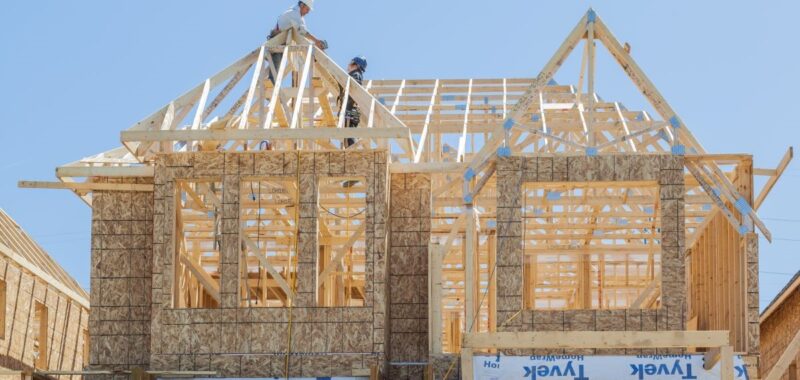Elevated mortgage rates and ample supply have given homebuilders an advantage over sellers of existing homes because they’re able to offer significant rate concessions to buyers while offering more choices. These advantages are evident in the data.
The U.S. Census Bureau and U.S. Department of Housing and Urban Development reported that new-home sales hit a seasonally adjusted annual rate of 739,000 in July. This is a whopping 10.6% jump compared to June and a 5.6% rise year over year. While these numbers are better than expected, HousingWire Lead Analyst Logan Mohtashami said that other data foreshadowed the jump.
“New-home sales grew better than expected but there were clues on this earlier,” Mohtashami said. “HMI builder survey data had two slightly positive months of growth in the category of demand looking out six months for single-family homes.
“The purchase application data for the new-home sales sector grew last month and it’s a monthly survey. And Toll Brothers commented [in its earnings call] that their traffic was better in August as rates went even lower.”
But the dynamics that have given homebuilders the upper hand are changing. Rates have been inching down, with the 30-year fixed rate for conventional loans now sitting at 6.67%, according to HousingWire’s Mortgage Rates Center. They’re primed to drop further.
Mere minutes after the release of the new-home sales report, Federal Reserve Chairman Jerome Powell said during a speech at the Kansas City Fed’s annual conference that “the time has come for policy to adjust.” The housing industry already expected interest rate cuts in September, and these remarks are the clearest sign yet that it will happen.
Existing-home sales in July remained sluggish, with a 1.3% rise compared to June and a 2.5% decline year over year. But existing-home supply jumped by 19.8% year over year, bringing the months of supply at the current sales pace to 4.0, which is high relative to where it’s been over the past year.
Meanwhile, the supply of new homes has stalled. In July, new homes for sale hit a seasonally adjusted annual rate 462,000, which translates into 7.5 months of supply. That’s down 10.7% year over year.
With the inventory gap between new and existing homes narrowing — and with rates coming down — homebuyers who have been sidelined by affordability challenges will be more able to shop for existing homes.
“An increase in the number of existing homes for sale may soften buyer interest in purchasing new,” Bright MLS chief economist Lisa Sturtevant in a statement. “With lower rates and more options, expect more homebuyers in the market this fall. However, the new-home market has probably lost some of its advantage as home shoppers can find lower-priced existing homes where sellers are increasingly willing to negotiate.”
Another long-term dynamic at play is the 2024 election. Democratic presidential nominee Kamala Harris released a housing plan that features $25,000 in down payment assistance for first-time homebuyers that is likely to be in the form of direct assistance. The Harris campaign also pitched the construction of 3 million new rental and for-sale homes through tax incentives for builders.
Republican nominee Donald Trump hasn’t put much of a plan forward, although he and his running mate JD Vance have echoed calls for first-time homebuyer assistance while also claiming that a crackdown on illegal immigration would lead to more available housing units for American citizens.
If Harris wins and executes her housing plan when she takes office, the tax incentives for builders could lead to a busy 2025 housing market.

